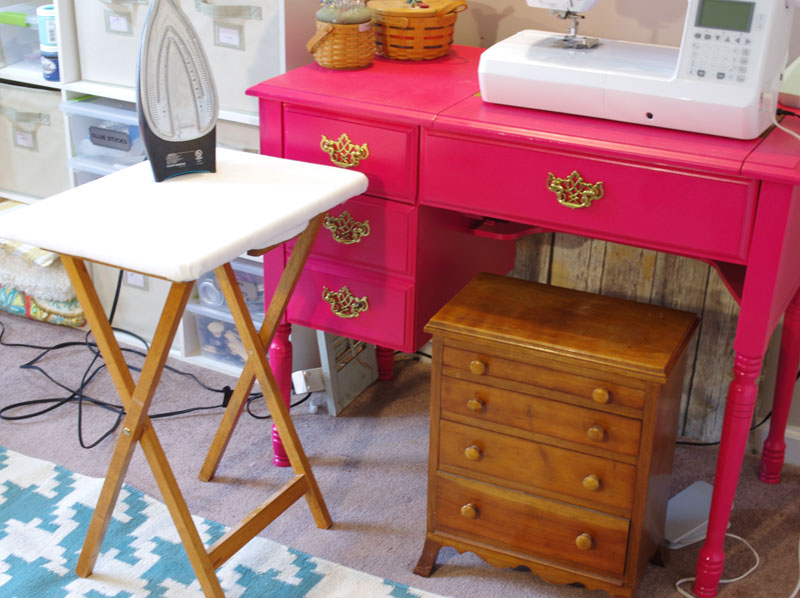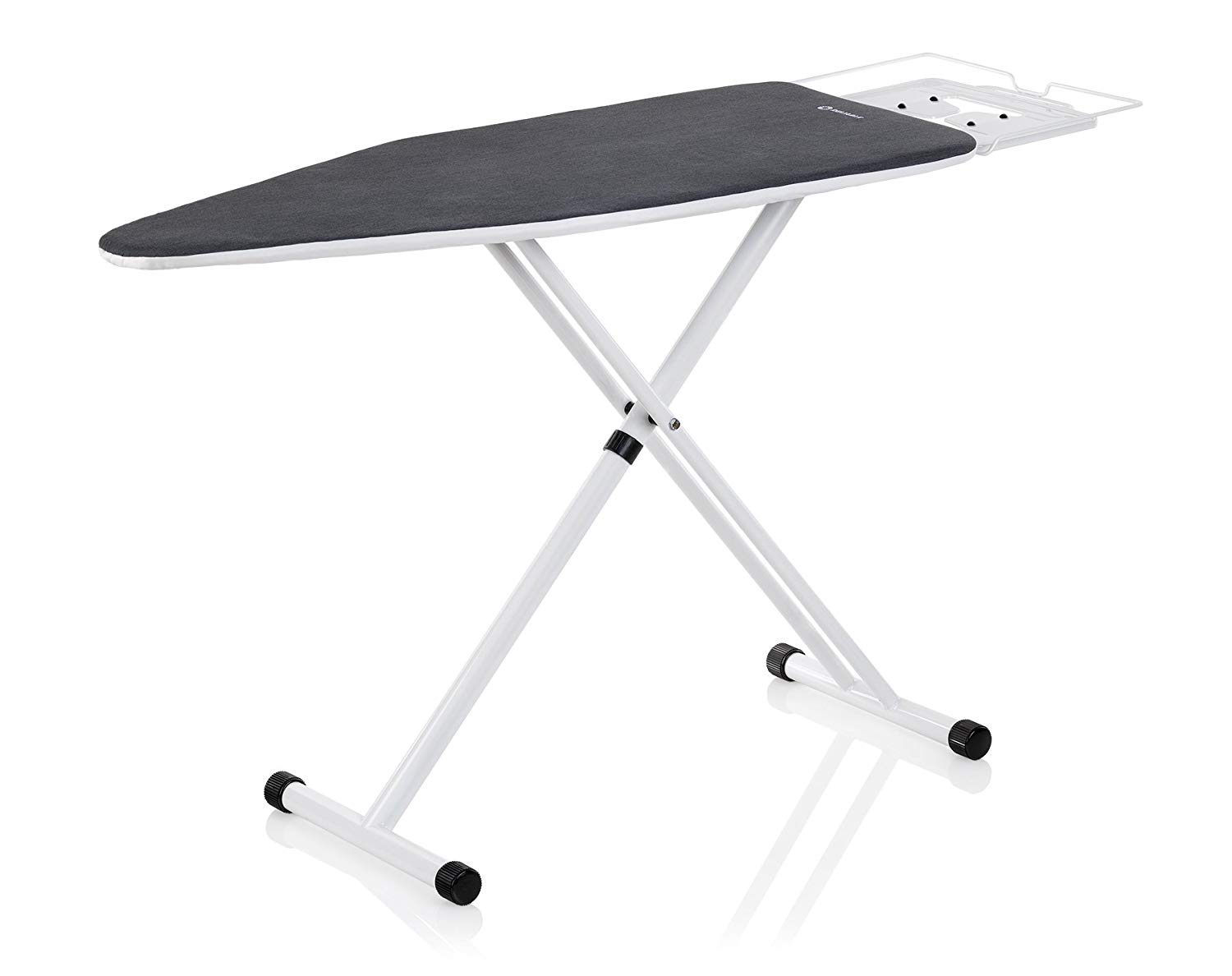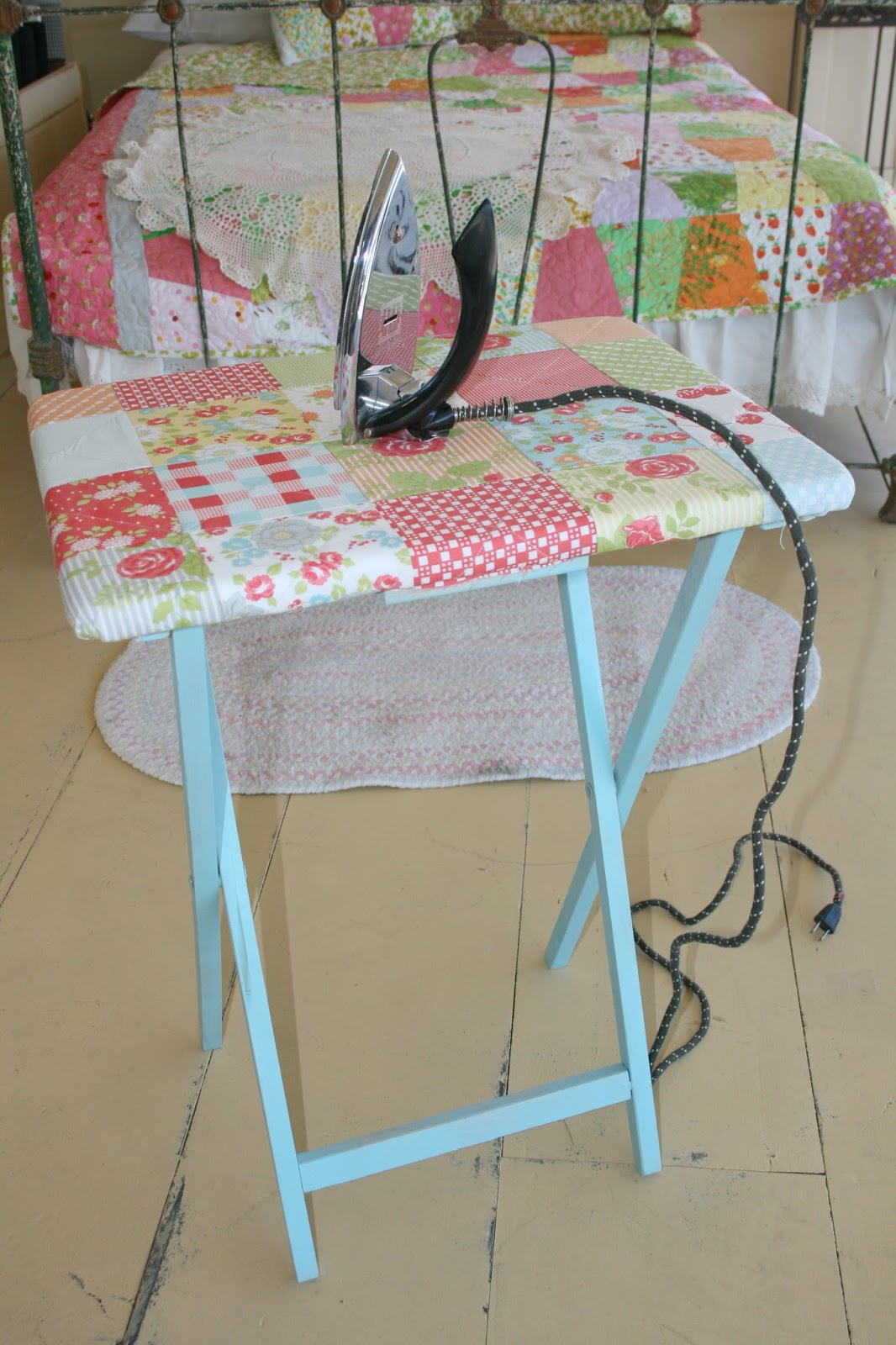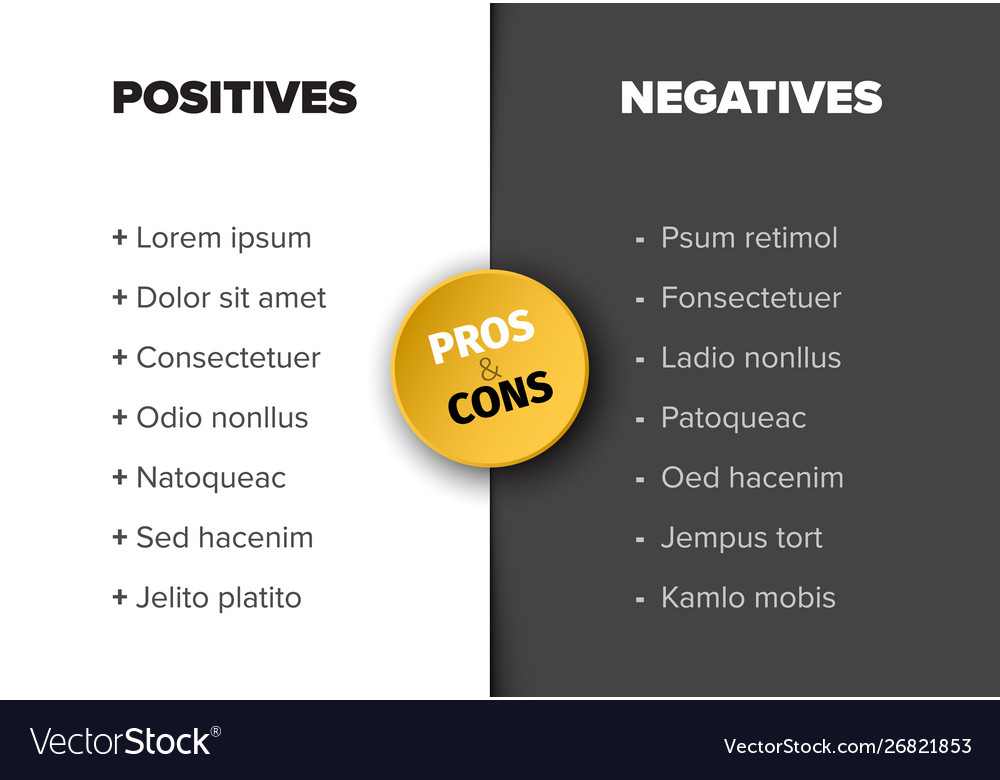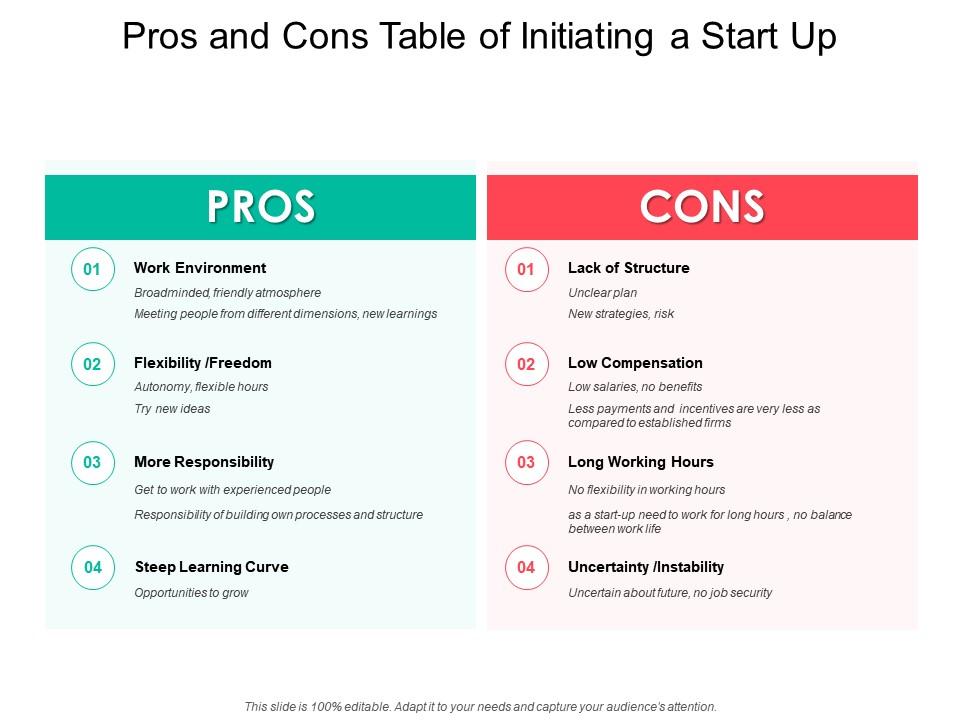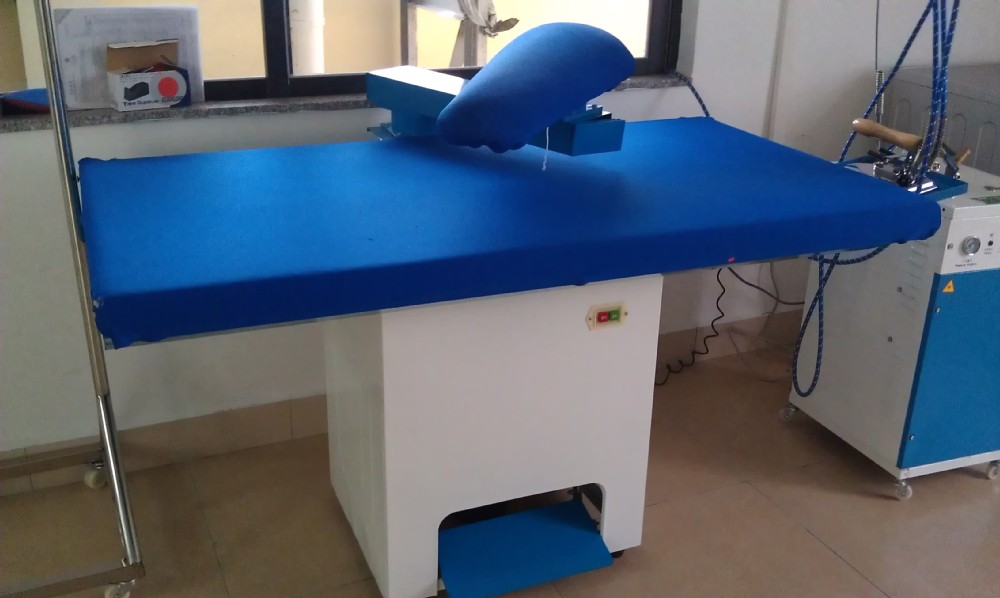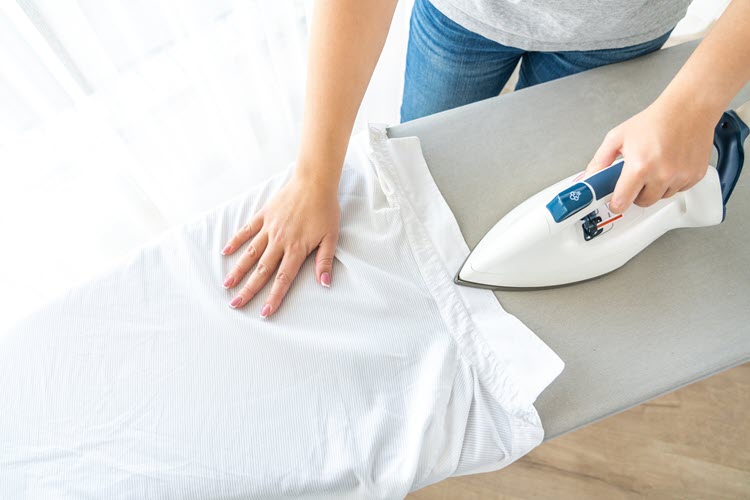Ironing on a kitchen table may not be the most ideal or common way to do laundry, but it can be a convenient option for those who don't have an ironing board or lack space in their home. However, there are some tips and tricks to keep in mind to ensure a successful ironing session on your kitchen table. First and foremost, make sure your kitchen table is clean and free of any crumbs or spills. The last thing you want is to transfer any dirt or debris onto your clothes while ironing. Next, choose a flat surface on your kitchen table to iron on. Avoid any areas with raised designs or grooves, as they can leave marks on your clothes or make it difficult to iron properly. Additionally, consider placing a thin towel or cloth over your kitchen table to provide some padding and protect the surface from heat and potential scratches. This will also prevent your clothes from sticking to the table.Ironing on kitchen table: Tips and tricks
While ironing on a kitchen table may seem like a risky move, there are ways to minimize any potential damage to your table. Using a thin towel or cloth as mentioned earlier not only protects your clothes, but also acts as a barrier between the iron and the table. This will help prevent any heat or moisture from damaging the surface of your table. It's also important to use the appropriate heat setting on your iron. Too much heat can cause burns or scorch marks on your table, while too little heat won't effectively remove wrinkles. Adjust the heat setting based on the type of fabric you're ironing and start with a lower setting to avoid any accidents. Lastly, try to avoid using steam while ironing on a kitchen table. The moisture from the steam can seep through the cloth and damage the table, or even cause it to warp over time.How to iron on a kitchen table without damaging it
If you find yourself frequently ironing on your kitchen table, it may be worth investing in a proper ironing board. There are several options available that are specifically designed to be used on top of a kitchen table or any flat surface. Folding ironing boards are a popular choice as they are compact and can easily be stored when not in use. They also come with adjustable height settings, making it easier to find a comfortable ironing position. Another option is a tabletop ironing board, which is essentially a smaller version of a traditional ironing board. These are designed to fit on top of a kitchen table and come with a built-in iron rest for convenience. If you want a more permanent solution, you can opt for a wall-mounted ironing board that can be installed in your laundry room or even in a closet. This not only saves space, but also keeps your ironing board out of sight when not in use.Best ironing boards for kitchen tables
If you're feeling crafty, you can also make your own ironing board specifically for your kitchen table. All you need is a piece of plywood or sturdy cardboard that is slightly larger than your kitchen table, some batting or foam, and a heat-resistant fabric to cover it. Simply wrap the batting or foam around the plywood, securing it in place with staples or fabric glue. Then, cover the board with the heat-resistant fabric, again using staples or fabric glue to secure it. And voila, you have a custom-made ironing board that fits perfectly on your kitchen table!DIY ironing board for kitchen table
Like any laundry task, ironing on a kitchen table has its own set of pros and cons. One of the main advantages is convenience. If you don't have an ironing board or space to store one, using your kitchen table is a practical solution. It also allows you to multitask and use your kitchen table for other activities while waiting for your clothes to dry. On the other hand, space and potential damage are major drawbacks of ironing on a kitchen table. If you have a small kitchen or limited counter space, using your kitchen table for ironing may not be the best option. And as mentioned earlier, there is a risk of damaging your table if proper precautions are not taken.Ironing on a kitchen table: Pros and cons
If you're set on using your kitchen table for ironing, here are some additional tips to ensure your table stays in good condition. Aside from using a towel or cloth as a barrier, consider placing a cutting board or silicone trivet under the ironing board for extra protection. These materials are heat-resistant and will prevent any direct contact between the iron and the table. You can also rotate the position of your ironing board on the table to avoid repeatedly ironing on the same spot, which can cause wear and tear over time. Lastly, clean your kitchen table after each ironing session to remove any dust or residue that may have accumulated.How to protect your kitchen table while ironing
For those who have never ironed on a kitchen table before, here is a step-by-step guide to help you through the process. Step 1: Set up your ironing board on a clean and flat surface of your kitchen table. Step 2: Adjust the heat setting on your iron based on the fabric you're ironing. Step 3: Place a thin towel or cloth over the table and your clothes to protect them. Step 4: Iron your clothes, starting with the lowest heat setting and gradually increasing if needed. Step 5: Rotate the position of your ironing board to avoid repeatedly ironing on the same spot. Step 6: Once finished, remove the towel and let your clothes cool down before folding or hanging them.Ironing on a kitchen table: Step-by-step guide
If ironing on a kitchen table doesn't work for you, there are other options available. Ironing mat: This is a portable, heat-resistant mat that can be placed on any flat surface, such as a countertop or bed, to use as an ironing board. Vertical steamer: If you're mainly concerned with removing wrinkles from clothes, a vertical steamer can be a quick and efficient alternative. Simply hang your clothes and use the steamer to release any wrinkles. Ironing service: For those who don't enjoy ironing or simply don't have the time, there are ironing services available that can take care of this task for you.Alternatives to ironing on a kitchen table
So, which is the better option - ironing on a kitchen table or on an ironing board? The truth is, it depends on your personal preference and circumstances. If you have space for an ironing board and prefer a designated area for ironing, then that may be the better choice for you. However, if you're short on space or don't have an ironing board, ironing on a kitchen table can be a viable alternative. Just make sure to take the necessary precautions to protect your table.Ironing on a kitchen table vs. ironing on an ironing board
If you do end up with iron marks on your kitchen table, don't panic. There are a few ways to remove them. For light marks, a simple solution of dish soap and warm water can be effective. Mix the two together and use a cloth to gently scrub the marks. Rinse with clean water and dry with a towel. For tougher marks, you can try using a mixture of baking soda and water. Apply the paste to the marks and let it sit for a few minutes before wiping it off with a damp cloth. If all else fails, you can sand and refinish the affected area of your table. This may require some extra effort, but it will leave your table looking as good as new. In conclusion, ironing on a kitchen table can be a convenient option for some, but it's important to take precautions to protect your table. Consider investing in a proper ironing board or using alternative methods if ironing on a kitchen table doesn't work for you. And always remember to clean your table after each ironing session to keep it in good condition.How to remove iron marks from a kitchen table
The Benefits of Ironing on Your Kitchen Table

Maximizing Space and Efficiency

When it comes to house design, every inch of space matters. That's why finding multi-functional solutions for everyday tasks is crucial. One such solution that may not immediately come to mind is using your kitchen table as an ironing board. Not only does this save space, but it also increases efficiency by eliminating the need to set up and take down a traditional ironing board.
Instead, ironing on your kitchen table allows you to quickly and easily set up your ironing station, without having to lug out a bulky ironing board. Plus, since most kitchen tables are at a comfortable height, there's no need to strain your back while ironing.
Creating a Central Hub for Chores

The kitchen table is often the hub of the household, where families gather for meals and conversations. By incorporating ironing into this central space, it can become a hub for household chores as well. This is especially helpful for busy families who may not have a designated laundry room or space for ironing.
With the kitchen table serving as a central hub for chores, it also allows for multitasking. While waiting for dinner to cook, you can quickly iron a few items without having to leave the room. This saves time and allows you to complete tasks more efficiently.
Protecting Your Clothing and Surfaces

One of the biggest concerns with ironing on kitchen tables is the risk of damaging the surface. However, with the right precautions, this can easily be avoided. Placing a thick towel or ironing pad on top of the table provides a protective barrier between the hot iron and the surface.
Additionally, using a silicone ironing mat or heat-resistant cloth can also protect your clothing from scorching. These mats are designed to withstand high heat and are perfect for ironing delicate fabrics.
Ironing on your kitchen table also eliminates the need to constantly move and adjust a traditional ironing board, which can sometimes cause damage to walls or furniture. This makes it a safer option for your home and your clothing.
Incorporating Style into Your Home

Another benefit of ironing on your kitchen table is the opportunity to incorporate style into your home. Traditional ironing boards can be bulky and unsightly, but using your kitchen table allows you to choose a decorative ironing pad or cloth that matches your kitchen décor.
Additionally, since the kitchen is often the heart of the home, incorporating ironing into this space can add a touch of charm and hominess to your household chores.
As you can see, ironing on your kitchen table offers many benefits for house design. It maximizes space and efficiency, creates a central hub for chores, protects your clothing and surfaces, and even adds a touch of style to your home. So why not give it a try and see how this simple change can make a big difference in your daily routine?








